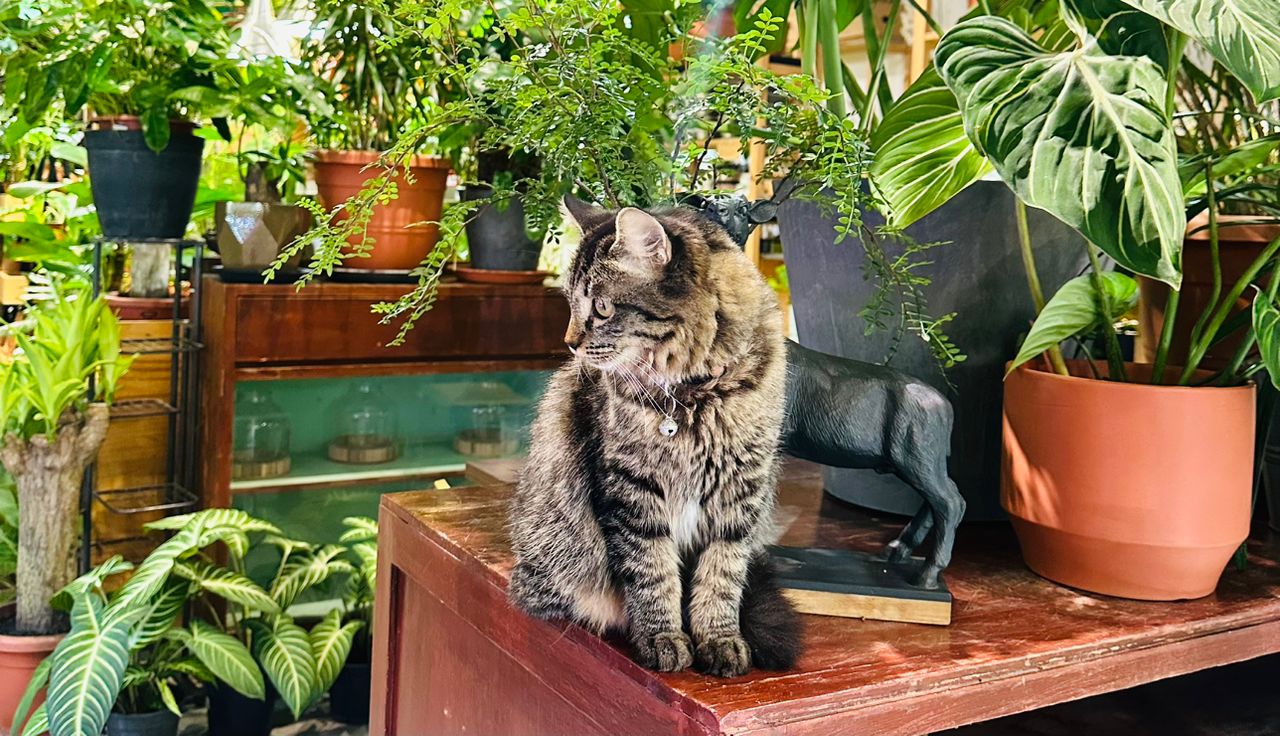
Cat-Friendly Plants: Safe Choices and Their Care Requirements
Cats are curious creatures, often nibbling on household plants. As a responsible pet owner, it's essential to ensure that the plants in your home are safe for your feline friends. Some plants are toxic to cats and can cause severe health issues if ingested. In this article, we will explore cat-friendly plants, their care requirements, and what makes a plant toxic to cats.
Cat-Friendly Plants and Their Care Requirements
If you love greenery but want to keep your cat safe, here are some excellent plant choices:
Bamboo palm -> Buy Here
- Care Requirements:
- Prefers bright, indirect sunlight
- Water when the topsoil feels dry
- Thrives in well-draining soil
- Pet Benefits: Safe for cats, adds humidity to the air
- Care Requirements:
Boston Fern (Nephrolepis exaltata)
- Care Requirements:
- Prefers indirect light
- Keep soil consistently moist but not soggy
- Enjoys high humidity, making it perfect for bathrooms
- Pet Benefits: Non-toxic and a great air purifier
- Care Requirements:
Spider Plant (Chlorophytum comosum) -> Buy Here
- Care Requirements:
- Thrives in bright, indirect light but tolerates low light
- Water moderately, allowing soil to dry between watering
- Grows well in hanging baskets
- Pet Benefits: Safe for cats, reduces airborne toxins
- Care Requirements:
Parlor Palm (Chamaedorea elegans)
- Care Requirements:
- Prefers low to medium indirect light
- Water when the soil begins to dry out
- Adaptable and easy to care for
- Pet Benefits: Non-toxic, provides a tropical aesthetic
- Care Requirements:
Calathea (Calathea spp.) -> Buy Here
- Care Requirements:
- Prefers indirect light and warm, humid environments
- Water regularly, keeping the soil slightly moist
- Sensitive to tap water; use filtered water if possible
- Pet Benefits: Safe for cats and comes in beautiful leaf patterns
- Care Requirements:
What Makes a Plant Toxic to Cats?
Some plants contain toxic compounds that can be harmful to cats when ingested. Here are common plant toxins and their effects:
Calcium Oxalate Crystals (e.g., Peace Lily, Dieffenbachia, Philodendron)
- Causes oral irritation, drooling, difficulty swallowing
Saponins (e.g., Aloe Vera, Jade Plant, Yucca)
- Leads to vomiting, diarrhea, lethargy
Alkaloids (e.g., Tulips, Daffodils, Lilies)
- Causes heart arrhythmias, difficulty breathing, and kidney failure in severe cases
Essential Oils (e.g., Eucalyptus, Pennyroyal, Tea Tree)
- Can cause digestive distress, nervous system issues, or liver damage
Signs of Plant Toxicity in Cats
If your cat has ingested a toxic plant, watch out for these symptoms:
- Vomiting or diarrhea
- Lethargy or weakness
- Drooling or pawing at the mouth
- Loss of appetite
- Difficulty breathing
What to Do If Your Cat Eats a Toxic Plant
If you suspect that your cat has ingested a toxic plant:
- Remove any remaining plant material from their mouth.
- Identify the plant to assess toxicity.
- Contact your veterinarian or a pet poison hotline immediately.
- Monitor symptoms and seek emergency care if they worsen.
Conclusion
By choosing cat-friendly plants, you can create a beautiful and safe indoor environment for both you and your feline companion. Always research plants before bringing them home, and if in doubt, consult your veterinarian. With the right selection, you can enjoy lush greenery while keeping your cat healthy and happy!

